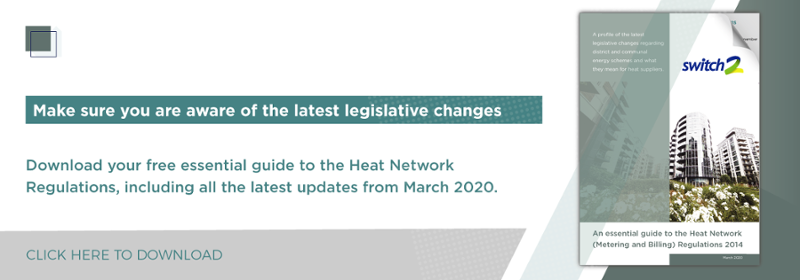A simplified analogy to open protocol heat networks, heat network owners are becoming increasingly interested in the option to ‘pick n mix’ their network suppliers. Our podcast explains the common challenges when adopting this approach and ways that it can be alleviated.
Listen to the Switch2 podcast
Translating the supply chain: Pick n mix heat network suppliers
For many years, Switch2 have offered turnkey solutions to heat network operators, in many difference forms, such as Energy Services Company (ESCo), contracted energy management services to simply metering and billing. Providing a full turnkey solution is great for a provider like us, as it means we can help select the equipment to work with from the heat interface units (HIUs), the meters and meter reading system to the pay-as-you-go (PAYG) system. Furthermore, it gives us confidence in working with this equipment and that it’s the right stuff for the job.
Pick n mix service suppliers
However, we are seeing some changes in the market with companies wanting the option to pick and mix their suppliers. There are many good reasons for this, local authorities and Registered Social Landlords (RSLs) might want to do the metering and billing or the maintenance internally as they may have the resources to carry this out already, thus protecting job roles and efficiently using the available resource.
Turnkey solutions also dictate longer contracts, so if you’re in a position where you can only use short term contracts, then the ability to ‘pick and mix’ suppliers may be more appropriate.
It all sounds so good, what’s the catch?
There are issues coming to light in the heat network industry when clients want to separate billing from the metering and pay as you go services.
This is to do with standards and providing the best possible service to residents. Open protocol is discussed often, as an answer to be able to switch the service options available for a heat network.
But to do this, each supplier must encode and decode the data and this is about language, not a bona fide solution that will work time again. For example, this blog is written in English, and English is an open protocol language, with a dictionary and thesaurus available to help you make sense of the language. Having said that, so are all languages, so I could be working with a German colleague, we both might talk open protocol but of course if they can’t speak English and I can’t speak German then there is going to be a problem. There lies the problem when asking for open protocol equipment. So what’s the solution?
Learning from the gas and electricity markets
The gas and electricity industry went through this process around 20 years ago. The UK electricity industry contained 13 regional companies which delivered turnkey solutions. They delivered everything along the supply chain. When the Government decided to break up the electricity market to introduce competition, new players and technologies; they broke up the supply chain. But to do this they went through the process to clearly identify the metering operators, the data collectors and suppliers. Then they defined a way of talking to each other which was the Data Transfer Network (DTN). This in effect, standardised the language that the different players in the industry would talk to each other.
From a Switch2 point of view, it is time for the heat network industry to start introducing standards and define roles for metering and billing and other elements of the supply chain. Then, when clients want to contract to different service providers for different elements of that service, we will have a standard language and there will be clarification about the roles and responsibilities of each provider.
Key takeaways
- Pick n mix operators want to use different service providers for different supply chain
- The industry, like the electricity and gas industries need to decide upon defined roles
- Yet there are many different languages when talking open protocol



